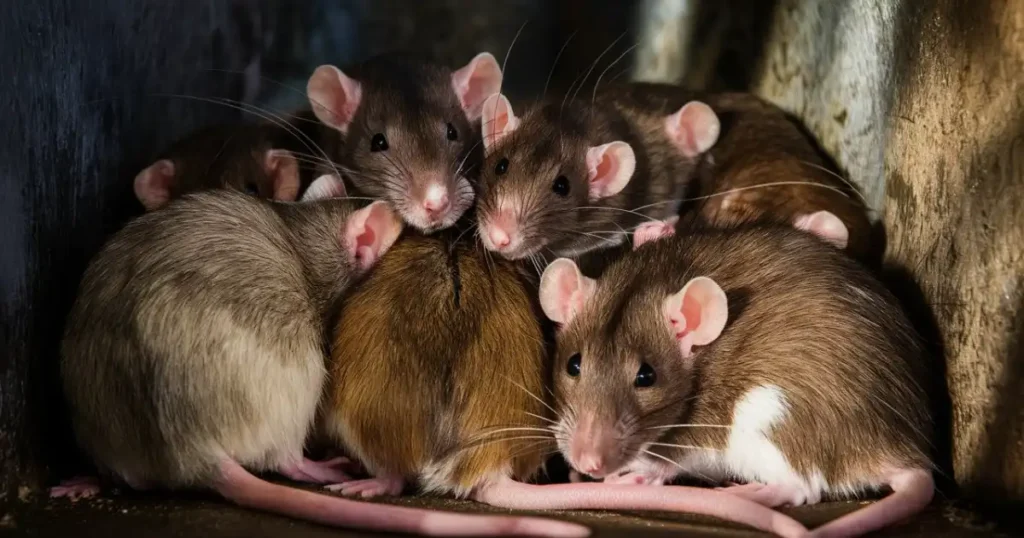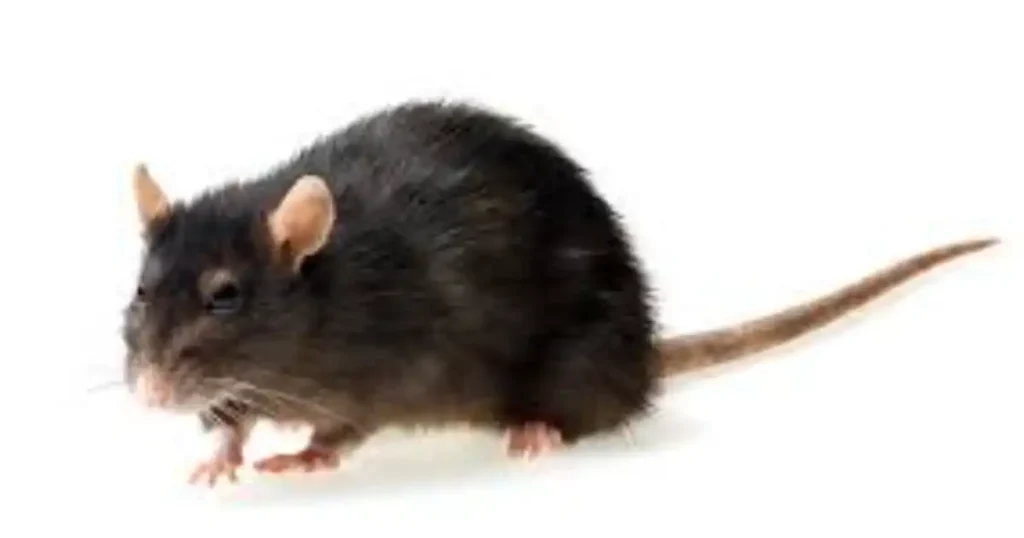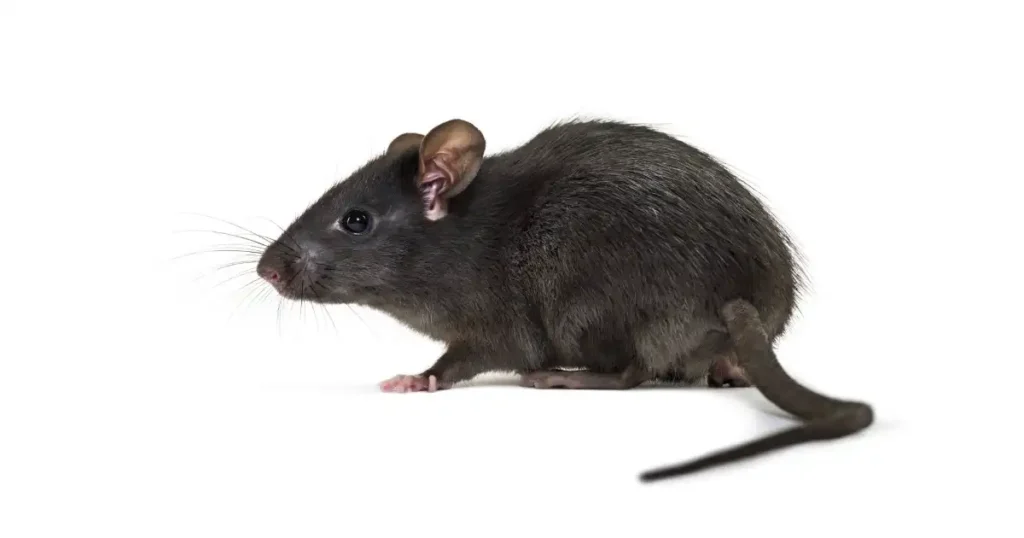
Rat blood, like the blood of all mammals, serves as a vital fluid in the rat's body, performing essential functions necessary for survival. The study of rat blood provides significant insights into the physiological and pathological states of these rodents, which is crucial for researchers, pest control professionals, and veterinarians. This article delves into the intricate details of rat blood, exploring its components, functions, and implications for health and disease.
By examining the cellular and molecular composition of rat blood, we can better understand how these animals respond to environmental stresses, infections, and other health challenges. This knowledge not only enhances our ability to manage and control rat populations effectively but also contributes to broader scientific research that can be applied to human health and disease prevention.
Understanding the anatomy of a rat is crucial for researchers, veterinarians, and pest control professionals. This article provides a comprehensive overview of the rat's anatomy, addressing various aspects including skeletal structure, internal organs, and behavioral characteristics.

One of the most common questions asked is, Do rats have bones? Yes, rats do have bones. In fact, a rat's skeletal structure is similar to that of other mammals, providing support and protection for its internal organs.
How many bones does a rat have? A typical rat has around 230 bones, which include the skull, spine, ribs, and limbs. This skeletal framework enables rats to be agile and efficient in their movements, which is essential for their survival in various environments.
The pancreas in a rat is an important organ that plays a crucial role in digestion and metabolism. Located near the stomach and the small intestine, the pancreas of a rat secretes digestive enzymes that help in the breakdown of food. It also produces insulin, which is vital for regulating blood sugar levels. Studying the pancreas in a rat helps researchers understand similar functions in humans and can lead to advancements in medical research.
The rat mouth is a fascinating part of its anatomy. Rats have strong incisors that grow continuously throughout their lives, requiring them to gnaw on various materials to keep them trimmed. The rat mouth also includes a well-developed set of molars for grinding food, aiding in efficient digestion.
The external and internal parts of a rat are numerous and intricately connected. Externally, the rat's body is divided into the head, neck, trunk, and tail. Internally, key organs include the brain, heart, lungs, liver, kidneys, and intestines. Understanding these parts of a rat is essential for comprehensive anatomical and physiological studies.

Red blood cells, or erythrocytes, are the most abundant cells in rat blood. They are responsible for transporting oxygen from the lungs to various tissues and organs and carrying carbon dioxide back to the lungs for exhalation. The red coloration of these cells is due to the presence of hemoglobin, an iron-containing protein that binds to oxygen.
White blood cells, or leukocytes, play a crucial role in the immune system of rats. These cells are involved in defending the body against infectious agents such as bacteria, viruses, and parasites. There are several types of leukocytes in rat blood, including:
Platelets, or thrombocytes, are small cell fragments that play a crucial role in blood clotting. When a blood vessel is injured, platelets aggregate at the site of injury, forming a temporary plug that helps prevent further blood loss. They also release chemicals that promote the coagulation cascade, leading to the formation of a stable blood clot.
Plasma is the liquid component of rat blood, making up about 55% of its total volume. It is primarily composed of water but also contains proteins (such as albumin, globulins, and fibrinogen), electrolytes, nutrients, hormones, and waste products. Plasma serves as a medium for transporting cells, nutrients, and waste products throughout the body.
One of the primary functions of rat blood is the transport of oxygen from the lungs to tissues and organs, and the removal of carbon dioxide, a waste product of cellular respiration, from tissues back to the lungs for exhalation.
Blood is essential for transporting nutrients absorbed from the digestive tract to cells throughout the body. It also carries waste products from cellular metabolism to excretory organs such as the kidneys and liver for elimination.
The immune cells in rat blood are vital for protecting the body against infections. White blood cells identify and destroy pathogens, while antibodies neutralize foreign invaders and toxins.
Blood helps regulate body temperature by distributing heat produced by metabolic processes throughout the body. Vasodilation and vasoconstriction of blood vessels help control heat loss and retention.
Endocrine glands produce hormones, which are chemical messengers that travel through blood. These hormones regulate various physiological processes, including growth, metabolism, and reproduction.

Rat blood is extensively used in biomedical research due to the physiological similarities between rats and humans. Studies on rat blood have contributed to our understanding of human diseases, including cardiovascular disorders, immune system diseases, and hematological conditions.
Rats are commonly used in toxicology studies to assess the safety and efficacy of new drugs and chemicals. Blood tests in these studies help determine the impact of substances on the body's organs and systems.
Rats are used as animal models for various human diseases, including diabetes, hypertension, and cancer. Blood analysis in these models provides insights into disease mechanisms and the effectiveness of potential treatments.
Understanding the blood physiology of rats is essential for veterinarians who treat pet rats or laboratory animals. Blood tests are crucial for diagnosing and monitoring diseases, as well as for evaluating the health status of these animals.

Anemia in rats can result from blood loss, nutritional deficiencies, or chronic diseases. It is characterized by a reduced number of red blood cells or low hemoglobin levels, leading to symptoms such as lethargy and pale mucous membranes.
Bacterial, viral, and parasitic infections can affect rat blood, leading to conditions such as septicemia (blood infection) and hemoparasitic diseases. Leukocytosis (increased white blood cell count) is often a sign of infection.
Rats can suffer from clotting disorders, either due to genetic conditions or as a result of exposure to anticoagulant poisons. These disorders can lead to excessive bleeding or thrombosis (formation of blood clots within blood vessels).
Leukemia is a type of cancer that affects white blood cells. In rats, it can lead to an abnormal increase in leukocytes, resulting in impaired immune function and other systemic effects.
Hemoglobin, the protein responsible for oxygen transport in red blood cells, is a critical focus in the study of rat blood. Advanced techniques such as spectrophotometry and electrophoresis are used to measure and analyze hemoglobin levels and types. These analyses can detect abnormalities in hemoglobin structure or function, providing insights into conditions like anemia and hemoglobinopathies.
Flow cytometry is a powerful technique used to analyze the physical and chemical characteristics of cells in a blood sample. In rat blood studies, flow cytometry can be used to quantify different populations of white blood cells, assess cell viability, and analyze the expression of cell surface markers. This technique is invaluable for immunological research and for studying blood-borne diseases.
PCR is a molecular technique used to amplify and analyze specific DNA sequences. In the context of rat blood, PCR can be used to detect the presence of pathogens, identify genetic mutations, and study gene expression. This method is particularly useful in toxicology studies and in the development of disease models.
Mass spectrometry is used to analyze the proteins and metabolites present in rat blood. This technique can provide detailed information about the molecular composition of blood, identify biomarkers of disease, and study the effects of drugs and toxins. Mass spectrometry is a cornerstone of proteomics and metabolomics research.
Rat blood studies are essential in pharmacokinetics, the branch of pharmacology concerned with the movement of drugs within the body. By analyzing blood samples at various time points after drug administration, researchers can determine the absorption, distribution, metabolism, and excretion of drugs. These studies are critical for the development of new pharmaceuticals.
Rats are commonly used in cancer research to study tumor biology and to evaluate the efficacy of anticancer treatments. Blood tests in these studies can monitor the effects of treatments on blood cell counts, detect the presence of circulating tumor cells, and identify potential biomarkers for cancer diagnosis and prognosis.
Rat blood is used to study the pathogenesis of infectious diseases and to develop vaccines and therapies. For example, studies on blood-borne parasites and viruses in rats can provide insights into similar diseases in humans. Blood analysis helps in understanding the immune response to infections and in evaluating the effectiveness of vaccines.
Rats are often used as sentinel species in environmental and ecotoxicology studies. Blood tests can detect the presence of environmental contaminants, such as heavy metals and pesticides, and assess their impact on health. These studies are crucial for understanding the effects of pollutants on wildlife and human health.
The use of rats in research raises ethical considerations regarding animal welfare. Researchers must adhere to strict ethical guidelines and regulations to ensure humane treatment of animals. Advances in alternative methods, such as in vitro models and computer simulations, are being developed to reduce the reliance on animal studies.
Continued advancements in technology are enhancing the capabilities of blood analysis. Techniques such as next-generation sequencing, high-throughput screening, and bioinformatics are providing deeper insights into the molecular and genetic basis of diseases. These advancements are driving the development of personalized medicine and targeted therapies.
One of the major goals of rat blood research is to translate findings into clinical applications for humans. This translational research bridges the gap between basic science and clinical practice, leading to improved diagnostics, treatments, and preventive measures for human diseases.
Observing a rat’s behavior can provide significant insights into its health and well-being. A rat body language chart can help identify various emotions and states, such as fear, aggression, contentment, and curiosity. For instance, a relaxed rat will have a calm posture and smooth movements, while an anxious rat might display rapid movements and a tense body.
Rats are primarily nocturnal creatures, but they can also be active during the day, especially if they feel safe in their environment. Observing a rat during the day can provide valuable information about its daily routines, feeding habits, and interactions with its surroundings.
Critter Stop's reputation is built on the trust of countless satisfied customers who have benefited from their expertise and commitment to humane wildlife control.
f you are facing a rat problem, it is crucial to rely on professionals who understand the complexities of rat behavior and physiology, ensuring effective and ethical removal.
High-Quality Work: Critter Stop is known for their meticulous and effective pest control solutions, ensuring thorough rat extermination and prevention.
Great Customer Service: With numerous positive reviews online, Critter Stop excels in customer satisfaction, providing personalized and responsive service tailored to your needs.
Humane Methods: They prioritize humane wildlife removal, ensuring minimal harm to the animals while effectively addressing your pest control needs.
Expertise: Critter Stop's team of professionals is well-trained in handling a wide range of pests, including rats, ensuring your home remains pest-free.
If you are experiencing issues with rats or other pests in your home, contact Critter Stop for comprehensive and humane pest control services.
Their expertise and commitment to quality make them the best choice for residential pest control in North Texas.
Contact us at (214) 234-2616 to get a free estimate of our services.
Visit our Critter Library and learn more about our furry friends